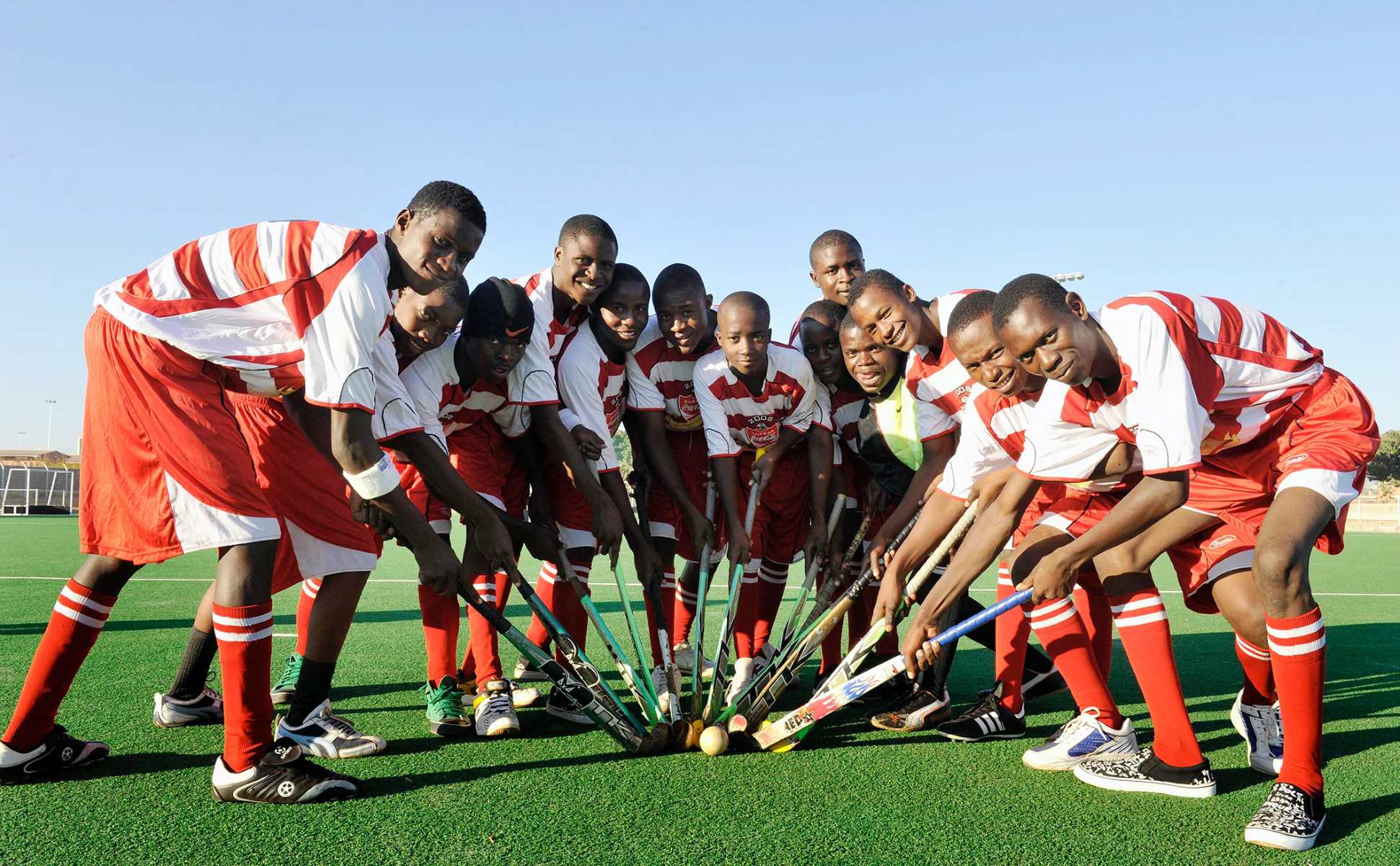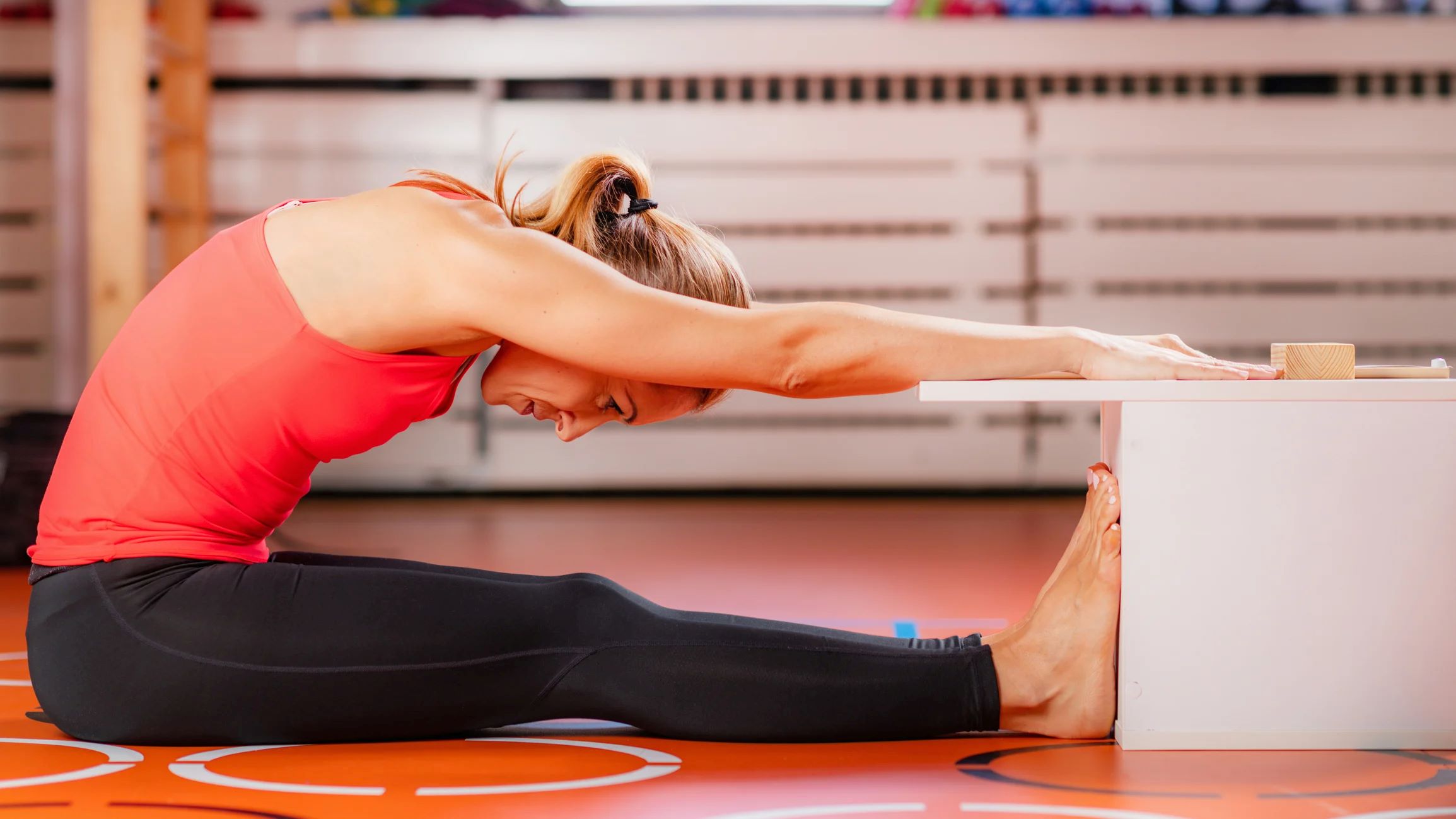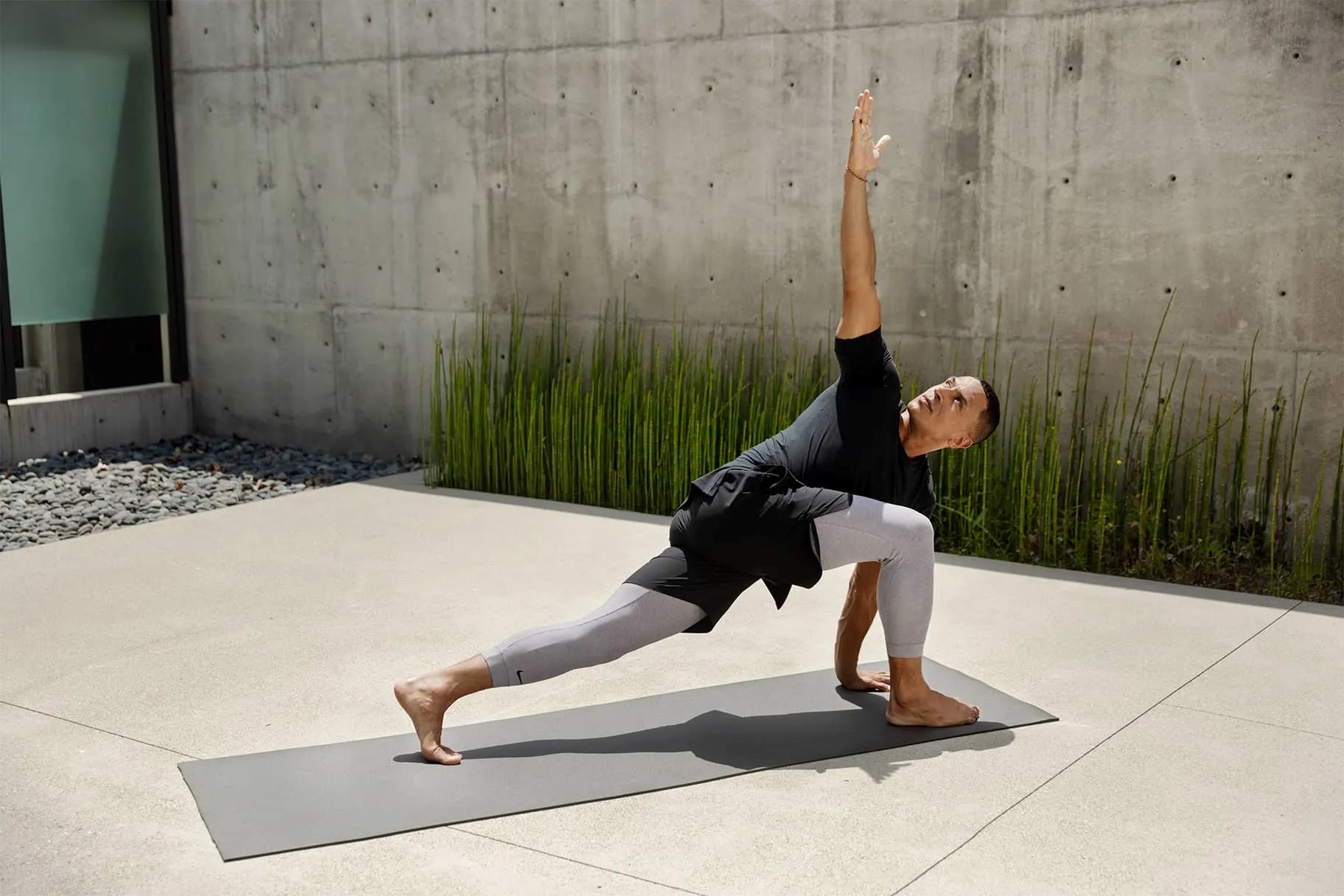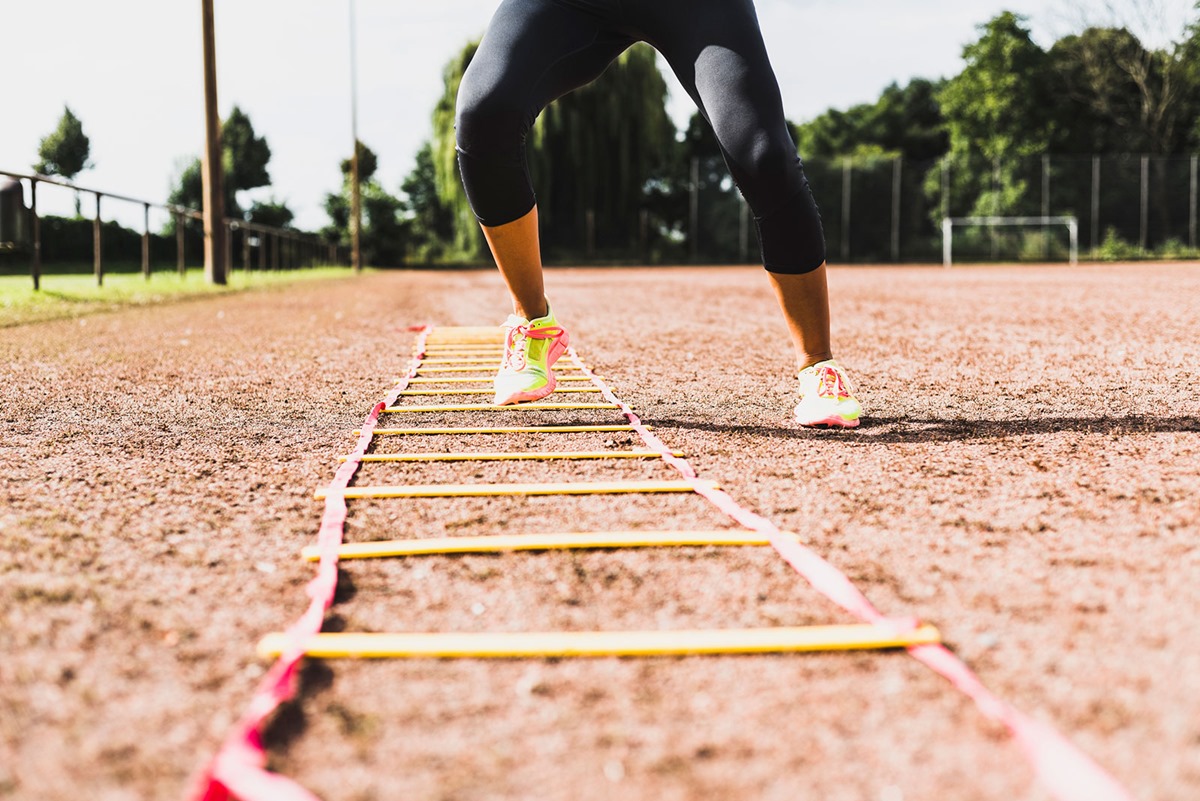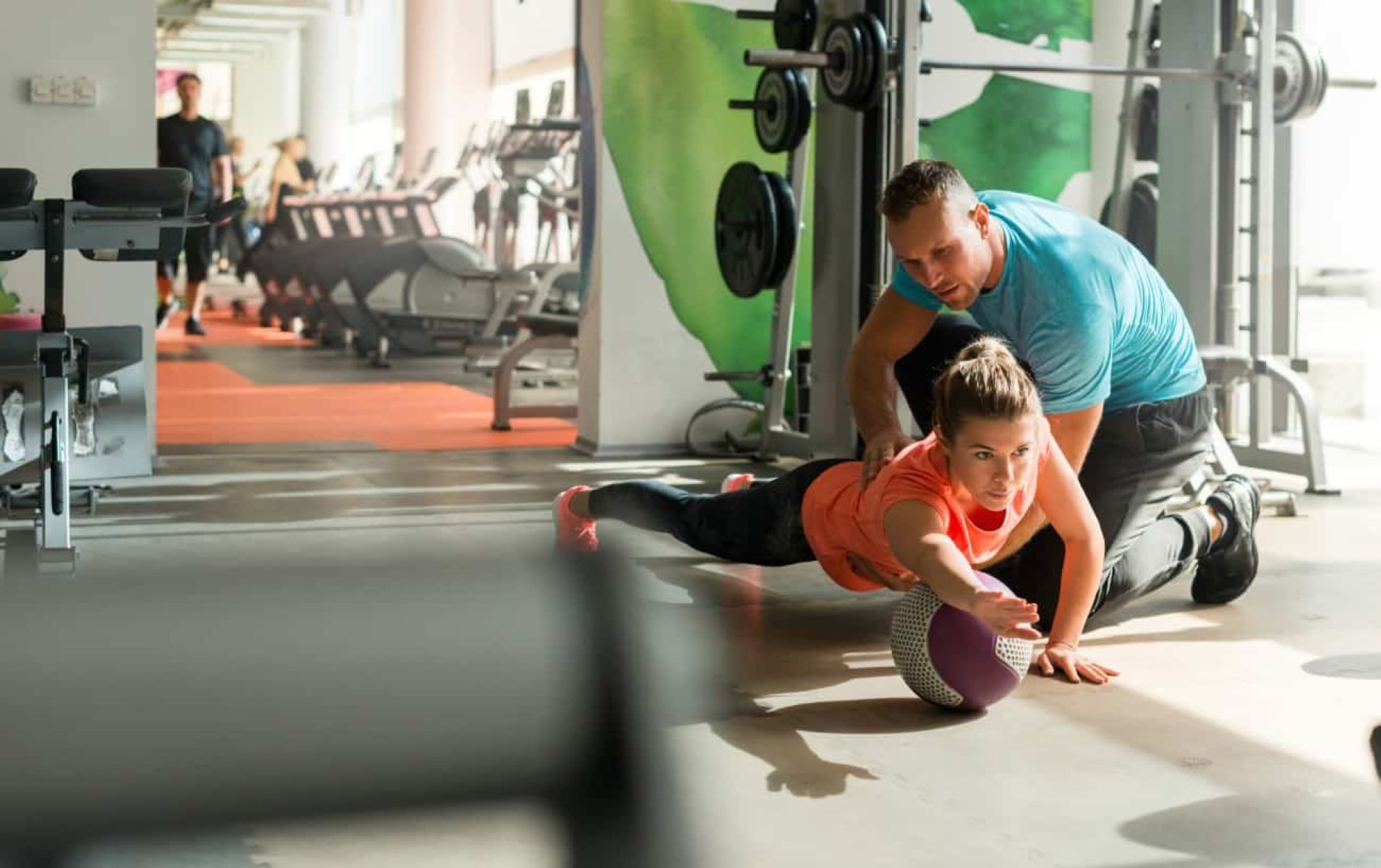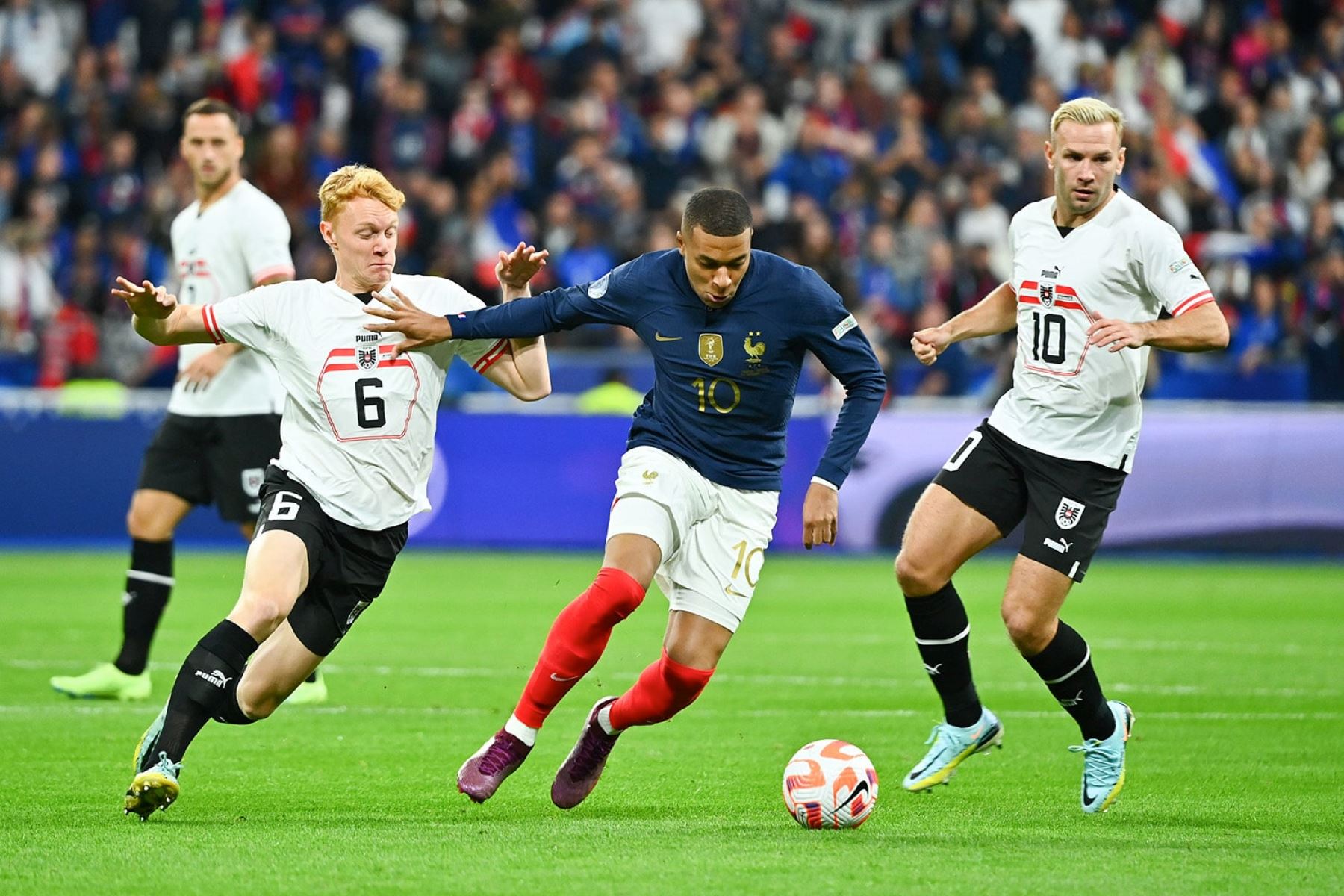

Featured
How To Increase Endurance For Soccer
Modified: January 22, 2024
Improve your soccer performance with these expert tips and exercises to increase endurance. Get featured in the game with enhanced stamina and lasting power.
Introduction
Soccer, also known as football, is a sport that demands a high level of endurance from its players. It is a game that requires constant movement, from sprinting down the field to chasing after the ball. A player’s stamina and endurance can make all the difference between a strong performance and a mediocre one. Developing endurance for soccer not only improves performance, but also reduces the risk of injuries and allows players to maintain their energy levels throughout the game.
In this article, we will explore the importance of endurance training for soccer players and discuss various strategies to increase endurance on the field. Whether you are a professional soccer player or someone who simply enjoys playing the sport recreationally, these tips and techniques will help you improve your endurance and take your game to the next level.
Before diving into the training methods, it is essential to understand the different energy systems at play during a soccer match. Soccer is primarily an aerobic sport, but it also involves intense bursts of anaerobic activity. By targeting these energy systems, we can design training programs that optimize performance on the field.
So, if you’re ready to boost your endurance and dominate the soccer field, read on to discover the best training techniques, exercises, and nutritional strategies to help you go the extra mile!
Importance of Endurance in Soccer
Endurance is a critical factor in soccer performance. The ability to sustain high levels of physical activity throughout a match is essential for success on the field. Here are some key reasons why endurance training is crucial for soccer players:
- Consistency: Soccer matches can last for 90 minutes or more, and players need to maintain a consistent level of performance during this time. Endurance training enables players to sustain their energy levels throughout the game, reducing the risk of fatigue and maintaining optimal performance.
- Increased Work Rate: Soccer is a highly dynamic sport that requires players to constantly change their pace, sprint, and engage in quick bursts of activity. By improving their endurance, players can increase their work rate, cover more ground on the field, and contribute to their team’s overall success.
- Reduced Injury Risk: Fatigue is one of the leading contributors to sports-related injuries. When players become tired, their technique and coordination may suffer, increasing the chances of accidents and strains. Building endurance helps players maintain proper form and reduces the risk of injury, allowing them to stay on the field longer and contribute to their team’s success.
- Mental Toughness: Soccer matches can be physically and mentally demanding. Endurance training not only strengthens the body but also cultivates mental toughness and resilience. Players who have built endurance are better equipped to handle the physical demands of the game and stay mentally focused even when fatigued.
To excel in soccer, players need to be able to keep up with the fast-paced nature of the game. This requires a high level of aerobic fitness and the ability to recover quickly from intense bursts of activity. Endurance training plays a vital role in developing these capacities, allowing players to perform at their best for the duration of a match.
Understanding the Energy Systems
Before delving into specific training strategies, it’s important to understand the energy systems that come into play during a soccer match. Soccer is characterized by a mix of aerobic and anaerobic activities, and by training these energy systems, players can optimize their endurance performance.
The two primary energy systems utilized in soccer are the aerobic and anaerobic systems:
- Aerobic System: The aerobic system relies on oxygen to produce energy and is responsible for supplying the body with a steady and sustained source of fuel. It is the dominant energy system in soccer, particularly during lower-intensity activities such as jogging, walking, and maintaining a steady pace on the field. Training the aerobic system involves activities that increase cardiovascular fitness, such as distance running, cycling, and swimming.
- Anaerobic System: The anaerobic system is responsible for producing energy in the absence of oxygen and comes into play during short bursts of intense activity. Soccer involves quick sprints, changes of direction, and explosive movements, all of which rely on the anaerobic system. Training the anaerobic system involves high-intensity interval exercises and sprint training to improve the body’s ability to generate energy during these intense activities.
It’s important to note that while the aerobic system is the foundation of endurance for soccer, the anaerobic system is also vital. During a match, players constantly transition between aerobic and anaerobic activities, making it necessary to develop both systems to perform optimally throughout the game.
By understanding the energy systems involved in soccer, players can tailor their training programs to focus on improving both aerobic and anaerobic fitness. This comprehensive approach ensures that players have the endurance and energy reserves to meet the demands of the game, whether it’s maintaining a steady pace or executing explosive movements.
Aerobic Training for Soccer Endurance
Aerobic training plays a vital role in improving endurance for soccer players. By targeting the aerobic energy system, players can enhance their cardiovascular fitness, increase their stamina, and maintain a consistent level of performance throughout the match. Here are some effective aerobic training methods for soccer endurance:
- Distance Running: Long-distance running is a classic method to build aerobic endurance. Incorporate regular steady-state runs into your training routine, gradually increasing the distance and intensity over time. This type of training helps improve cardiovascular fitness, enhances endurance capacity, and prepares players for the sustained effort required in a soccer match.
- Interval Training: Interval training involves alternating periods of high intensity with periods of lower intensity or rest. This method mimics the stop-start nature of soccer matches and trains the body to quickly recover and perform high-intensity actions repeatedly. Incorporate interval sessions into your training, such as running or cycling intervals, to boost your aerobic capacity and improve endurance on the field.
- Cross-Training: Engaging in other aerobic activities such as swimming, cycling, or rowing can provide a change of pace and help develop overall endurance. Cross-training allows players to work different muscle groups, prevent overuse injuries, and improve cardiovascular fitness in a fun and challenging way. Incorporate cross-training sessions into your routine to supplement your soccer-specific training.
- Circuit Training: Circuit training combines aerobic exercises with strength and conditioning exercises in a continuous, high-intensity circuit. This type of training challenges both the aerobic and muscular systems, helping to build endurance while improving overall fitness. Include exercises like jumping jacks, burpees, mountain climbers, and shuttle runs to create a dynamic circuit that targets aerobic endurance.
Remember to gradually progress your aerobic training, allowing your body to adapt and avoid overexertion. Start with lower intensity sessions and gradually increase the duration and intensity over time. Consistency is key, so aim for regular aerobic workouts throughout the week to build your endurance base.
By incorporating these aerobic training methods into your routine, you can improve your cardiovascular fitness, boost your endurance, and enhance your performance on the soccer field. Building a solid aerobic foundation will provide you with the energy and stamina needed to excel in the game and stand out among your opponents.
HIIT Training for Soccer Endurance
High-Intensity Interval Training (HIIT) is a popular and effective method to boost soccer endurance. HIIT involves short bursts of intense exercise followed by active recovery periods. This training technique not only improves aerobic capacity but also enhances the body’s ability to perform quick, explosive movements with minimal fatigue. Here are some ways to incorporate HIIT into your soccer endurance training:
- Sprint Intervals: Sprinting is a fundamental component of soccer. Incorporate sprint intervals into your training routine by performing short bursts of maximum-effort sprints followed by brief periods of active recovery. For example, sprint for 30 seconds and then jog or walk for 60 seconds. Repeat this cycle for a total of 10-15 minutes. This type of training simulates the intense nature of the game and helps improve speed, power, and endurance.
- Shuttle Runs: Shuttle runs are excellent for soccer-specific endurance. Set up a course that involves sprinting back and forth between two markers, mimicking the on-field movements. Perform multiple sets of shuttle runs, elevating your heart rate and challenging your anaerobic capacity. Take short breaks between sets to recover, and gradually increase the number of sets as your endurance improves.
- Tabata Protocol: The Tabata protocol is a popular form of HIIT training. It involves 20 seconds of maximum-effort exercise followed by 10 seconds of rest, repeated for a total of four minutes. Incorporate exercises such as burpees, mountain climbers, or high knees into your Tabata workouts to target multiple muscle groups while improving aerobic endurance. This quick and intense workout can be done in a short period, making it an efficient option for busy athletes.
- Circuit Training: Combine HIIT exercises with strength and conditioning exercises in a circuit format. Design a circuit that includes exercises such as squat jumps, push-ups, lunges, and planks, and perform each exercise with maximum effort for a set amount of time. Incorporate short rest intervals between exercises or circuits. This type of training not only improves cardiovascular fitness but also enhances overall strength and endurance, making it a valuable addition to your soccer training routine.
It is important to gradually increase the intensity and duration of your HIIT training to avoid overexertion and minimize the risk of injury. Start with shorter intervals and gradually progress to longer, more intense workouts as your fitness level improves.
By incorporating HIIT training into your soccer endurance routine, you can improve your body’s ability to sustain high-intensity efforts, recover quickly, and perform optimally throughout the match. This type of training closely mirrors the demands of soccer, ensuring that you are prepared to handle the physical challenges on the field.
Interval Training for Soccer Endurance
Interval training is a valuable method to enhance soccer endurance by combining high-intensity efforts with periods of active recovery. This type of training improves both aerobic and anaerobic capacity, allowing players to sustain their performance levels throughout the match. Here are some effective interval training techniques for soccer endurance:
- Pyramid Intervals: Pyramid intervals involve gradually increasing and then decreasing the intensity and duration of the intervals. For example, start with a 1-minute sprint followed by a 1-minute rest, then progress to a 2-minute sprint and a 2-minute rest, and continue increasing up to 3, 4, or 5 minutes, and then gradually decrease back down. This method challenges both aerobic and anaerobic systems, improving endurance, speed, and recovery.
- Fartlek Training: Fartlek, meaning “speed play” in Swedish, involves alternating periods of fast and slow running. During a training session, incorporate random bursts of sprinting, jogging, and walking. For instance, sprint for 30 seconds, jog for 1 minute, and walk for 2 minutes. This type of training mimics the unpredictable nature of a soccer match and helps improve speed, endurance, and recovery.
- Tempo Runs: Tempo runs are sustained efforts at a comfortably fast pace. During a training session, maintain a challenging but sustainable pace for a set duration, such as 10 or 20 minutes. Tempo runs improve your lactate threshold, allowing you to sustain higher intensities for longer periods without accumulating fatigue. This type of training helps develop aerobic capacity and enhances your ability to maintain a strong performance throughout a match.
- Game Simulations: Incorporate game simulations into your training routine to replicate the physical demands of a soccer match. Set up a series of drills and exercises that involve sprinting, change of direction, shooting, and passing. Perform each drill at a high intensity for a specific duration, followed by a short period of active recovery. Game simulations not only improve endurance but also help develop soccer-specific skills.
It is important to listen to your body and adjust the intensity and duration of your interval training based on your fitness level and progression. Gradually increase the intensity and duration of the intervals as you become more comfortable, ensuring that you are challenging yourself without risking overexertion and injury.
By incorporating interval training into your soccer endurance routine, you can improve your ability to sustain high-intensity efforts, recover quickly, and maintain a consistent level of performance throughout the match. These training techniques will better prepare you for the physical demands of the game and give you the edge over your opponents.
Plyometric Exercises for Soccer Endurance
Plyometric exercises are explosive movements that target both muscular power and endurance. They are beneficial for soccer players as they improve agility, speed, and overall endurance on the field. Incorporating plyometric exercises into your training routine can help take your soccer endurance to the next level. Here are some effective plyometric exercises for soccer players:
- Jump Squats: Jump squats are a dynamic plyometric exercise that targets the lower body and core muscles. Start in a squat position and explode upward into a jump, reaching your arms overhead. Land softly and immediately go back into another squat, repeating the movement in a fluid motion. Jump squats develop explosiveness and leg power, which are crucial for sprinting and quick changes in direction during a soccer match.
- Tuck Jumps: Tuck jumps are a challenging plyometric exercise that requires both lower body power and core stability. Start with a small jump, bringing your knees up towards your chest while in mid-air, and then extend your legs back out before landing. Repeat the movement in rapid succession. Tuck jumps improve explosiveness, coordination, and overall lower body strength.
- Bounding: Bounding is a plyometric exercise that mimics exaggerated running strides. It involves jumping forward off one leg and landing on the opposite leg, maintaining a smooth and continuous rhythm. Bounding helps improve stride length, power, and coordination, all of which are essential for efficient running and endurance on the soccer field.
- Lateral Bounds: Lateral bounds are plyometric exercises that focus on lateral movement, which is crucial for quick changes in direction during a soccer match. Start by standing on one leg and jump laterally to the side, landing softly on the opposite leg. Repeat the movement, alternating sides with each jump. Lateral bounds improve muscular power, agility, and stability, enhancing your ability to move quickly and decisively on the field.
- Box Jumps: Box jumps are a challenging plyometric exercise that requires explosive power and coordination. Stand in front of a stable box or platform, and with both feet, jump onto the box, landing softly in a squat position. Step down from the box and immediately repeat the movement. Box jumps develop lower body explosiveness, overall power, and the ability to absorb impact during landing.
Incorporate plyometric exercises into your training routine 2-3 times a week, ensuring proper warm-up and technique. Start with fewer repetitions and gradually increase the intensity and volume over time. It’s important to listen to your body and avoid overtraining to minimize the risk of injury.
By including these plyometric exercises in your soccer endurance training, you can enhance your explosiveness, develop muscular power, improve agility, and increase your overall stamina on the field. These exercises will not only improve your endurance but also take your soccer performance to new heights.
Flexibility and Mobility for Soccer Endurance
Flexibility and mobility are often overlooked aspects of soccer endurance training. However, having good flexibility and mobility can greatly impact your performance on the field. Incorporating flexibility and mobility exercises into your training routine can help reduce the risk of injuries, improve stride length, increase agility, and enhance overall endurance. Here are some key exercises to improve flexibility and mobility for soccer endurance:
- Dynamic Warm-Up: Before starting any training session or match, it is crucial to perform a dynamic warm-up that includes movements that mimic those used in soccer. Incorporate exercises such as leg swings, walking lunges, high knees, and lateral lunges to warm up the muscles and increase flexibility and range of motion. This will prepare your body for the demands of the game and help prevent injuries.
- Static Stretching: Static stretching after a workout or training session can help improve flexibility and restore muscles to their optimal length. Focus on stretching the major muscle groups used in soccer, including the quadriceps, hamstrings, calves, hips, and groin. Hold each stretch for 20-30 seconds and remember to breathe deeply and relax into the stretch. Avoid bouncing or jerking movements, as they can lead to injury.
- Foam Rolling: Foam rolling, also known as self-myofascial release, is a self-massage technique that helps release tension in the muscles and fascia. Foam rolling aids in improving flexibility, reducing muscle soreness, and enhancing overall mobility. Target areas such as the calves, quadriceps, hamstrings, IT band, and glutes to release any tightness or knots in the muscles.
- Yoga or Pilates: Practicing yoga or Pilates regularly can significantly improve flexibility, balance, and core strength. These disciplines focus on stretching and strengthening the muscles while promoting mind-body awareness. Incorporate yoga poses such as downward dog, pigeon pose, and warrior poses, or Pilates exercises that emphasize core strength and flexibility, into your training routine to enhance your overall endurance and performance on the field.
- Dynamic Stretching: Dynamic stretching involves moving your body through a full range of motion to improve joint flexibility and muscle elasticity. Incorporate exercises such as walking lunges with a twist, leg swings, knee hugs, and arm circles into your warm-up. Dynamic stretching helps improve mobility and prepares your body for the specific movements required during a soccer match.
Make flexibility and mobility exercises a regular part of your training routine, ideally performing them at least 2-3 times a week. Remember to listen to your body and avoid overstretching or pushing beyond your comfortable range of motion to prevent injury.
By improving flexibility and mobility, you can enhance your stride length, increase agility, and reduce the risk of muscle imbalances and injuries. Incorporating these exercises into your soccer endurance training will not only improve your overall performance but also contribute to your long-term athletic development.
Nutrition for Soccer Endurance
Nutrition plays a crucial role in maximizing soccer endurance. The food and beverages you consume before, during, and after a match or training session can significantly impact your energy levels, recovery, and overall performance. Here are some key nutrition tips to optimize endurance for soccer:
- Hydration: Proper hydration is essential for optimal performance and endurance. Be sure to drink enough water throughout the day and especially leading up to a match or training session. During the activity, ensure regular fluid intake to replace lost sweat and maintain hydration. Monitor your urine color as a general indicator of hydration – clear or light yellow is a good sign.
- Carbohydrates: Carbohydrates are the primary source of fuel for endurance activities. Prioritize complex carbohydrates such as whole grains, fruits, vegetables, and legumes. These foods provide a steady release of energy and support glycogen repletion in the muscles. Include carbohydrates in your pre-match meal and opt for easily digestible snacks during breaks in the game to maintain energy levels.
- Protein: Protein plays a key role in muscle repair and recovery. It is important to consume an adequate amount of protein throughout the day. Include lean sources such as poultry, fish, legumes, and dairy in your meals. Consuming protein shortly after a match or intense training session can aid in muscle recovery and adaptation.
- Healthy Fats: Incorporate sources of healthy fats into your diet such as avocados, nuts, seeds, and olive oil. These fats provide sustained energy and aid in the absorption of fat-soluble vitamins. Avoid excessive intake of saturated and trans fats found in processed foods, as they can impair performance and increase inflammation.
- Vitamins and Minerals: Adequate intake of vitamins and minerals is essential for overall health and performance. Consume a variety of fruits and vegetables to obtain a wide range of micronutrients. Calcium, iron, and vitamin D are particularly important for bone health and oxygen transport. Consider consulting with a healthcare professional to determine if supplementation is necessary.
- Timing: Pay attention to the timing of your meals and snacks to optimize fuel availability. Consume a well-balanced meal containing carbohydrates, protein, and healthy fats 2-3 hours before a match or training session. Have a light, easily digestible snack (e.g., fruit, energy bar) 1-2 hours before the activity. During breaks in the game, choose quick and easily digestible carbohydrate-rich foods to replenish energy stores.
Remember, nutrition for soccer endurance is not just about what you eat immediately before or during the game, but rather a consistent and balanced approach to fueling your body for optimal performance. Experiment with different foods and meal timing strategies during training to find what works best for you and consult with a registered dietitian if needed.
By prioritizing hydration, consuming a balanced diet rich in carbohydrates, protein, and healthy fats, and considering the timing of your meals and snacks, you can fuel your body for optimal soccer endurance. Good nutrition practices will enhance your performance, support recovery, and allow you to excel on the field.
Recovery Strategies for Soccer Endurance
Proper recovery is crucial for soccer players to optimize endurance and perform at their best. The demands of the game can take a toll on the body, and implementing effective recovery strategies is essential for reducing muscle soreness, preventing injuries, replenishing energy stores, and promoting overall recovery. Here are some key recovery strategies for soccer endurance:
- Active Recovery: Engage in light aerobic exercise or low-intensity activities such as walking or cycling on your recovery days. Active recovery helps increase blood flow, promoting the removal of metabolic waste products, and aids in muscle recovery without overexerting the body.
- Proper Nutrition: Consuming a balanced meal or snack that combines carbohydrates, protein, and healthy fats within 1-2 hours after a match or intense training session is crucial. This helps replenish glycogen stores, initiate muscle repair, and support recovery. Including high-quality protein sources such as lean meats, fish, dairy products, or plant-based alternatives is particularly important to promote muscle protein synthesis.
- Hydration: Rehydrate adequately after the game or training session to replace lost fluids and electrolytes. Consider consuming sports drinks or electrolyte-rich fluids like coconut water to replenish electrolyte levels. Remember that ongoing hydration is just as important for optimal recovery, so continue to drink water throughout the day.
- Rest and Sleep: Ensuring proper rest is essential for recovery. Aim for 7-9 hours of quality sleep each night to allow the body to repair and rebuild. Prioritize establishing a consistent sleep routine and create a conducive sleep environment to enhance the quality of rest.
- Massage and Foam Rolling: Utilize massage techniques, foam rolling, or other self-myofascial release techniques to reduce muscle tension, increase blood flow, and enhance recovery. These techniques help alleviate muscle soreness, improve flexibility, and enhance overall mobility. Use these techniques regularly, particularly in areas of tightness or discomfort.
- Stretching and Mobility Exercises: Engage in regular stretching and mobility exercises to improve flexibility and range of motion. Stretching helps relieve muscle tightness, reduce the risk of injury, and improve overall muscle recovery. Focus on stretches that target the major muscle groups used in soccer, and perform static stretches after exercise or dynamic stretches during warm-up.
Incorporate these recovery strategies into your routine consistently to optimize your body’s ability to recover and adapt to the demands of soccer endurance training. Every player is unique, so experiment with different strategies and pay attention to what works best for you in terms of recovery and overall performance.
Remember, recovery is a vital component of soccer endurance training. By prioritizing active recovery, proper nutrition, hydration, rest, and incorporating techniques like massage and stretching, you can enhance your recovery, reduce the risk of injuries, and maintain high levels of performance on the field.
Conclusion
Developing endurance for soccer is a critical aspect of training that can greatly enhance your performance on the field. By targeting the aerobic and anaerobic energy systems through various training methods such as aerobic training, HIIT, interval training, plyometric exercises, and flexibility work, you can improve your stamina, speed, agility, and overall endurance. Implementing proper nutrition, hydration, and recovery strategies is also key to sustaining your endurance and optimizing your performance in soccer.
Remember that consistency is key when it comes to endurance training. Gradually increase the intensity and duration of your workouts to allow your body to adapt and progress. Stay hydrated, fuel your body with the right nutrients, and prioritize proper recovery to prevent injuries and maximize your endurance potential.
Ultimately, improving your endurance for soccer requires a holistic approach that encompasses physical training, nutrition, and recovery strategies. By incorporating these strategies into your routine and staying dedicated to your training, you can develop the endurance necessary to excel in the beautiful game of soccer.

